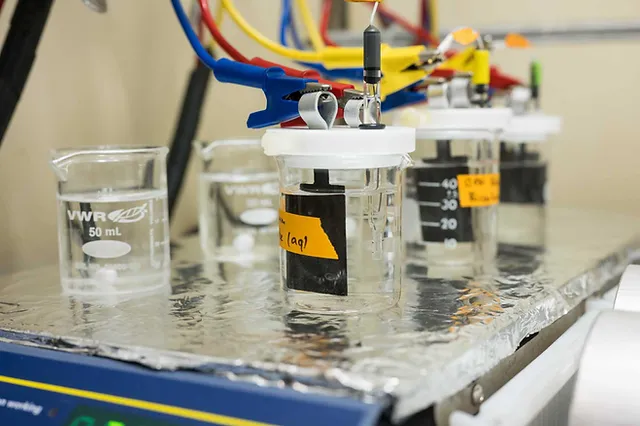A pioneering breakthrough in pollution remediation has emerged, offering a beacon of hope in the fight against harmful “forever chemicals” contaminating water sources. Researchers at the University of Rochester have unveiled an innovative electrochemical approach utilizing laser-generated nanomaterials crafted from nonprecious metals.
These nanocatalysts, meticulously designed to address per- and polyfluoroalkyl substances (PFAS) pollution, hold immense promise for tackling environmental and health risks associated with these persistent compounds. Specifically targeting Perfluorooctane sulfonate (PFOS), a notorious PFAS compound prevalent in various consumer products, the research team led by assistant professor Astrid Müller has devised a transformative solution.
Utilizing their expertise in ultrafast lasers, materials science, chemistry, and chemical engineering, Müller and her team have pioneered a novel process involving pulsed laser in liquid synthesis to fabricate nanocatalysts with unparalleled precision. These nanoparticles, meticulously tailored for electrocatalysis, are affixed to hydrophilic carbon paper, providing a cost-effective substrate with a vast surface area ideal for pollutant remediation.
The key to the efficacy of this method lies in its economical use of nonprecious metals, a stark departure from conventional approaches reliant on costly boron-doped diamond.
The key to the efficacy of this method lies in its economical use of nonprecious metals, a stark departure from conventional approaches reliant on costly boron-doped diamond. By leveraging nonprecious metals exclusively, the researchers have achieved remarkable cost savings, making pollution cleanup more accessible and scalable.
In addition to its cost-effectiveness, the technique boasts impressive efficiency, with calculations indicating nearly 100 times lower costs compared to traditional methods. Moreover, ongoing research aims to further optimize the process by exploring alternative materials and expanding its applicability to other prevalent PFAS chemicals.
Looking ahead, Müller envisions widespread deployment of this technology in wastewater treatment facilities and remediation efforts at contaminated sites. Beyond its environmental benefits, the social justice implications of this innovation are profound, offering a ray of hope for economically disadvantaged communities burdened by pollution.
Despite the formidable challenges posed by PFAS contamination, Müller advocates for a holistic approach that embraces innovation and sustainability. By harnessing the power of electrocatalysis, she envisions a future where pollution remediation is not only effective but also equitable and environmentally conscious.
As this pioneering research paves the way for a cleaner, healthier future, it underscores the transformative potential of science and technology in addressing pressing environmental challenges. With continued support and collaboration, solutions like these hold the key to safeguarding our planet for generations to come.



